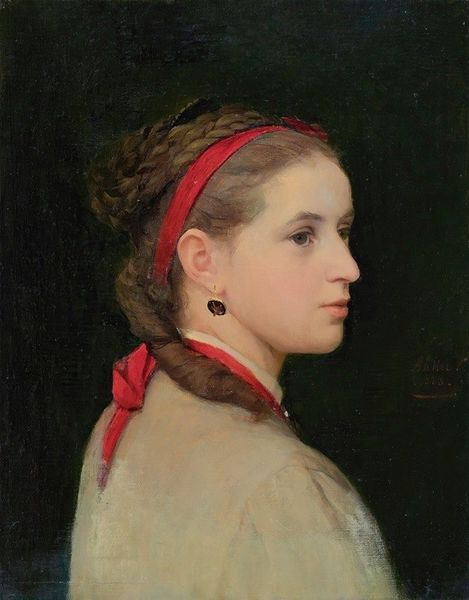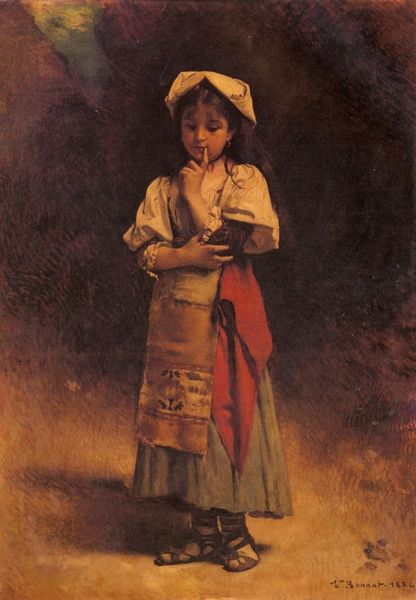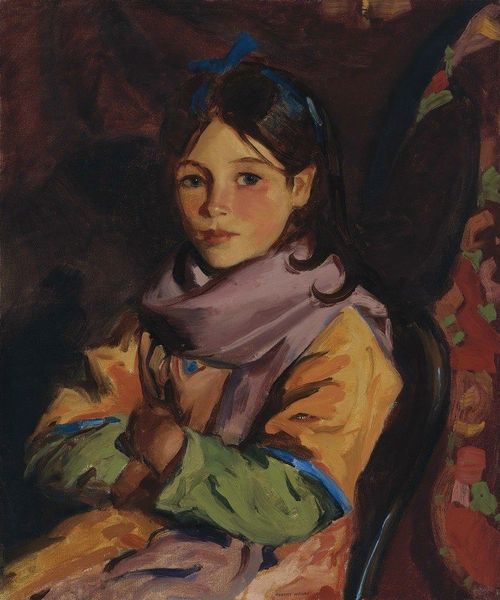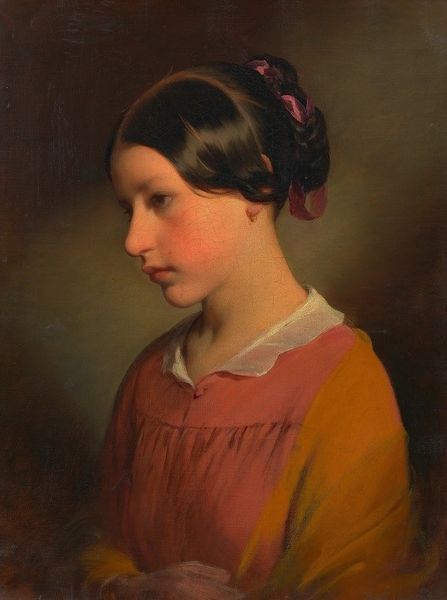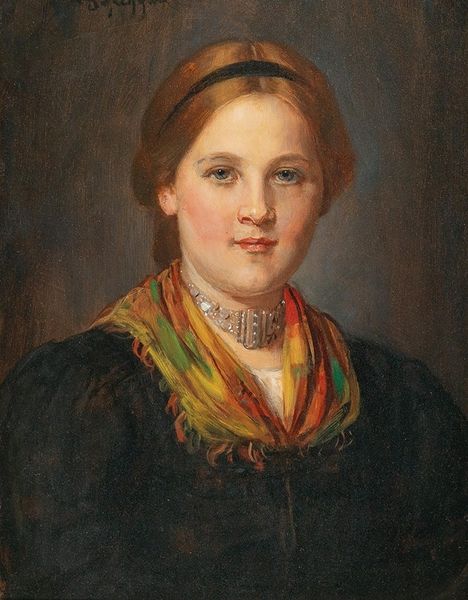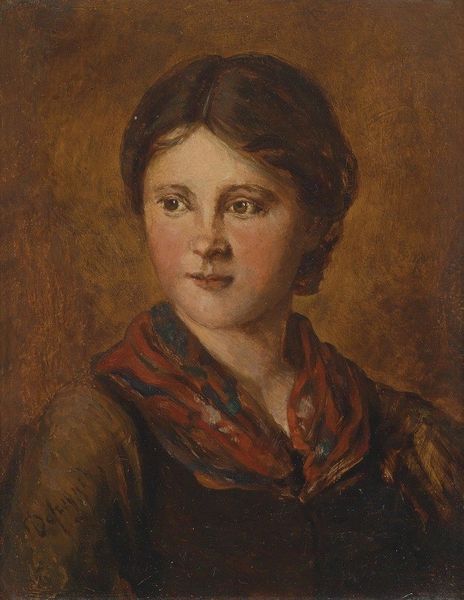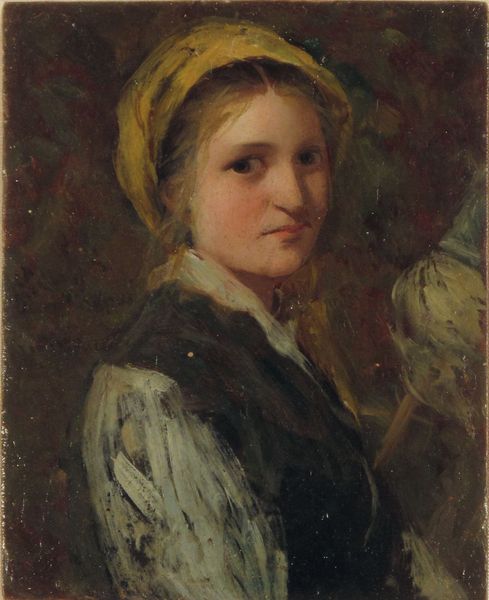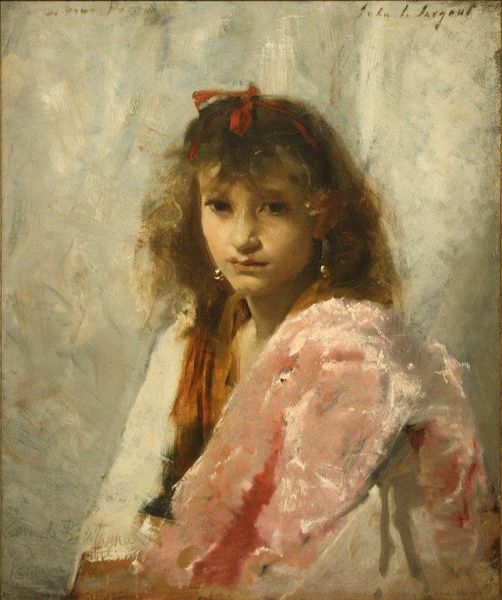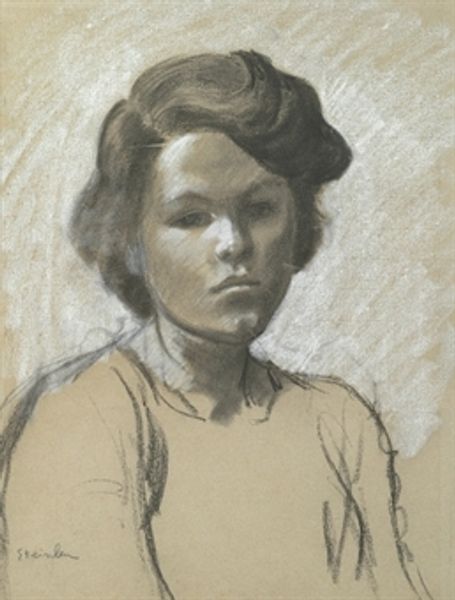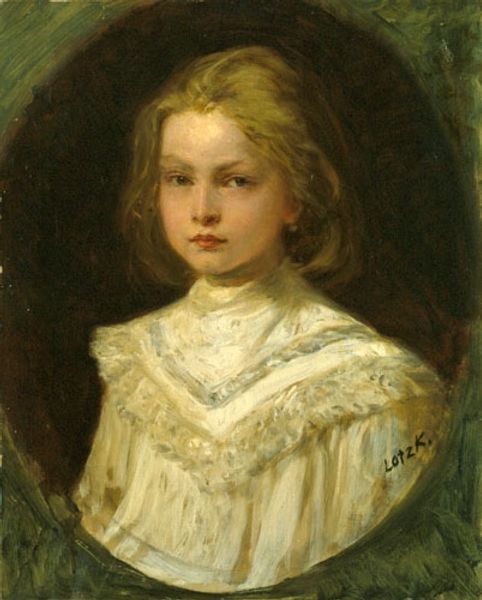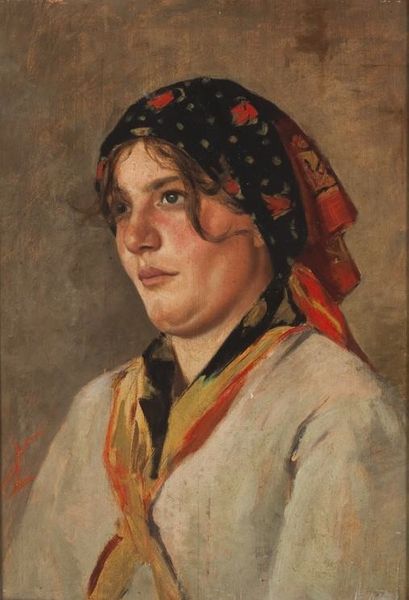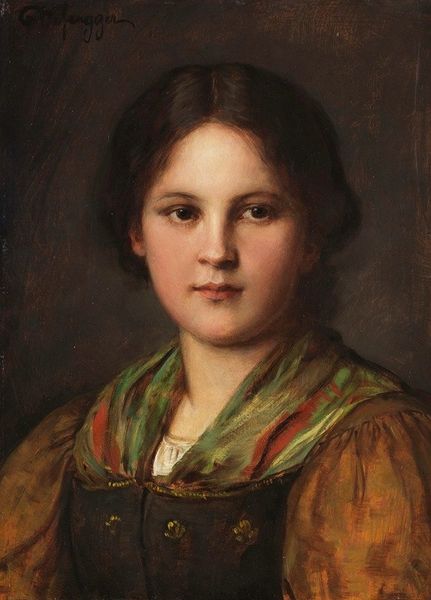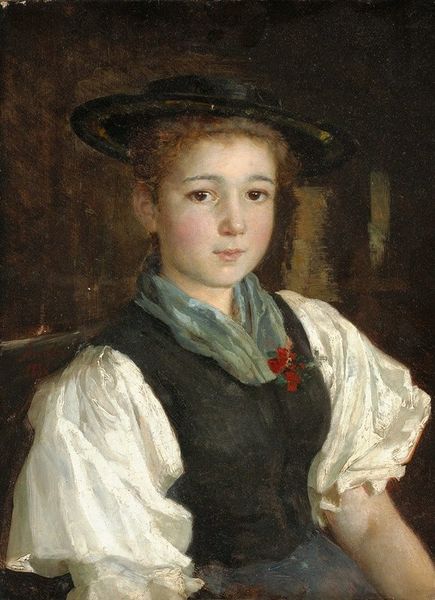
Copyright: Public Domain: Artvee
Editor: This is Anders Zorn’s "Head of a Woman," a watercolor from 1880. There’s an appealing freshness to it, a sense of immediacy. What do you see in this piece from a materialist perspective? Curator: I see a compelling study in the relationship between material and social class. Watercolor, in 1880, was readily available and comparatively inexpensive, placing it within reach of a wider segment of society. Zorn's choice of this medium speaks volumes. Editor: Interesting. How does that relate to the subject? Curator: Precisely! Consider the woman's attire: a simple headband, unadorned clothing. The modest materials of her presentation coupled with the accessibility of the watercolor itself challenge any sense of aristocratic detachment often associated with portraiture of this era. It brings the subject, and perhaps the process of art making, closer to the everyday. Notice also how the artist hasn't obscured the process; you can see the strokes and layers of the paint. Editor: So, you're saying the very 'stuff' of the painting – both paint and subject – point towards a democratization of art? Curator: In a way, yes. It compels us to think about who had access to art, both as maker and subject, and how Zorn navigated these social boundaries through his artistic choices. The visible labor, the economical medium – they invite questions about consumption, value, and representation itself. Editor: That's a completely different lens than I would have considered! I'll definitely be thinking about materials in relation to social context more carefully. Curator: Excellent! Examining the artwork’s materiality enables to delve into the social circumstances and influences surrounding its creation and audience.
Comments
No comments
Be the first to comment and join the conversation on the ultimate creative platform.
